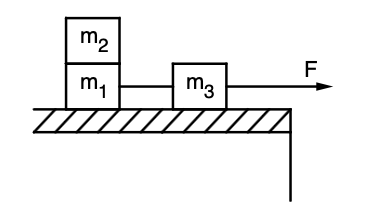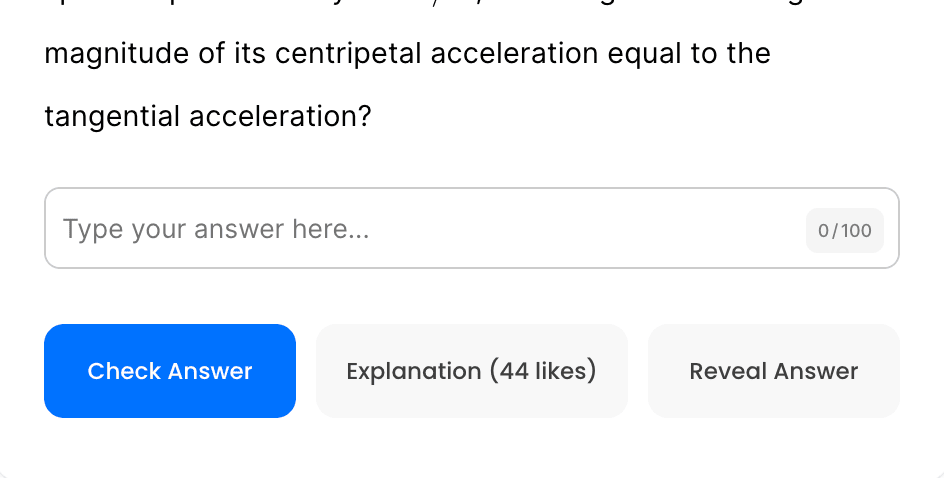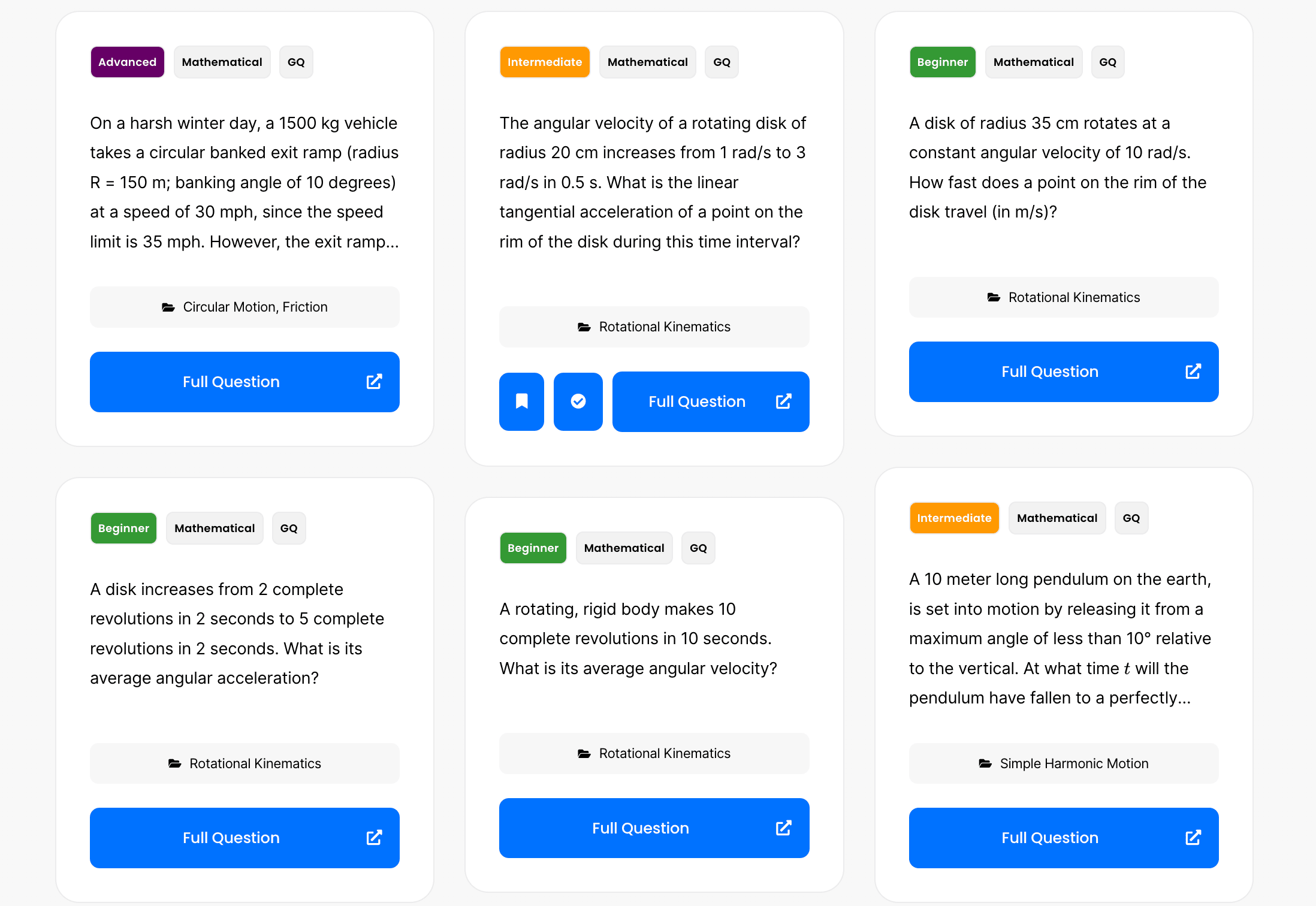A typical \( 68 \)\(-\text{kg} \) person can maintain a steady energy expenditure of \( 480 \) \( \text{W} \) on a bicycle. Approximately how many Calories are “burned” when the person rides a bicycle for \( 15 \) minutes? A typical energy efficiency for the human body is \( 25\% \), which takes into account the release of thermal energy.
A solid disk has a mass \( M \) and radius \( R \). What is the moment of inertia about an axis that is perpendicular to the plane of the disk and passes through its edge? Hint: the moment of inertia about the disk center is given as \(I_{center}=\frac{1}{2}M R^{2}\).
A student presses a \( 0.5 \) \( \text{kg} \) book against the wall. If the \( \mu_s \) between the book and the wall is \( 0.2 \), what force must the student apply to hold the book in place?
A \( 0.0350 \) \( \text{kg} \) bullet moving horizontally at \( 425 \) \( \text{m/s} \) embeds itself into an initially stationary \( 0.550 \) \( \text{kg} \) block.
Wile E. Coyote is (still) chasing after his arch-nemesis, the Roadrunner across a cliff that is \(125 \, \text{m}\) high. The Coyote is running in the horizontal direction towards the edge of a cliff when, at the last second, the Roadrunner steps out of the way and the witless coyote falls to the canyon floor.

The graph above shows the angular velocity of a spinning wheel (radius = \( 25 \) \( \text{cm} \)) as a function of time.
Two ice skaters suddenly push off against one another starting from a stationary position. The \(45 \, \text{kg}\) skater acquires a speed of \(0.375 \, \text{m/s}\) relative to the ice. What speed does the \(60 \, \text{kg}\) skater acquire relative to the ice?
In archery, should the arrow be aimed directly at the target? How should your angle of aim depend on the distance to the target? Explain without using equations.
When the mass of a simple pendulum is tripled, the time required for one complete vibration

Block \(m_1\) is stacked on top of block \(m_2\). Block \(m_2\) is connected by a light cord to block \(m_3\), which is pulled along a frictionless surface with a force \(F\) as shown in the diagram above. Block \(m_1\) is accelerated at the same rate as block \(m_2\) because of the frictional forces between the two blocks. If all three blocks have the same mass \(m\), what is the minimum coefficient of static friction between block \(m_1\) and block \(m_2\)?
A cart with a mass of \( 20 \) \( \text{kg} \) is pressed against a wall by a horizontal spring with spring constant \( k = 244 \) \( \text{N/m} \) placed between the cart and the wall. The spring is compressed by \( 0.1 \) \( \text{m} \). While the spring is compressed, an additional constant horizontal force of \( 20 \) \( \text{N} \) continues to push the cart toward the wall. What is the resulting acceleration of the cart?
By continuing you (1) agree to our Terms of Use and Terms of Sale and (2) consent to sharing your IP and browser information used by this site’s security protocols as outlined in our Privacy Policy.
Quick Start Guide
AP physics 1, AP C, honors and advanced physics students.
Quickly filter questions by units and more.


Here’s guide to using 5 UBQ filters.
GQ = general question, MCQ = multiple choice, FRQ = free response.


Click the check or bookmark button.
Now you’ll be able to see completed or bookmarked questions at a glance!
Answer keys, personalized for you.

Phy will be responsible for grading your FRQs and GQs.
No more copy and pasting. Just solve and snap.
Questions for Mastery

By continuing you agree to nerd-notes.com Terms of Service, Privacy Policy, and our usage of user data.